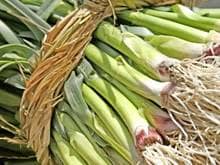
Did you know Afghan Jews whip each other with scallions during the ceremonial Passover meal, known as the seder? And that's not all! Every spring, Jews celebrate Passover, marking God sparing the Israelites and delivering them from slavery in Egypt, as detailed in the book of Exodus. For seven days Jews abstain from leavened bread to mimic the deprivation of their forefathers as they left Egypt through the Sinai desert.
The scattering of the Jews around the world over the past 2,000 years, to nearly every continent, has meant that these traditions have evolved and been adapted to different settings. Here are some of the most unique Passover traditions from around the world.
Eating the Dust of Real Bricks
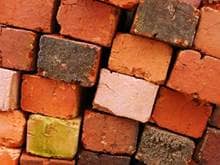 Every Passover, Jews prepare charoset, a sweet paste that can be made with fruits like dates, figs, and apples. The result is meant to remind sedergoers of the mortar in the bricks that Jewish slaves in Egypt used in their labor. In the British territory of Gibraltar, a tiny peninsula off Spain where Jews have lived for about 650 years, there's a special recipe for charoset: the dust of real bricks, ground up and mixed in.
Every Passover, Jews prepare charoset, a sweet paste that can be made with fruits like dates, figs, and apples. The result is meant to remind sedergoers of the mortar in the bricks that Jewish slaves in Egypt used in their labor. In the British territory of Gibraltar, a tiny peninsula off Spain where Jews have lived for about 650 years, there's a special recipe for charoset: the dust of real bricks, ground up and mixed in.Re-enacting Crossing the Red Sea
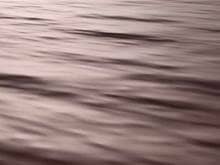 Hasidic Jews from the Polish town of Góra Kalwaria, known as Gerer Hasids, re-enact the crossing of the Red Sea on the seventh day of Passover by pouring water on the floor, lifting up their coats, and naming the towns that they would cross in their region of Poland. They raise a glass at each "town" and then thank God for helping them reach their destination.
Hasidic Jews from the Polish town of Góra Kalwaria, known as Gerer Hasids, re-enact the crossing of the Red Sea on the seventh day of Passover by pouring water on the floor, lifting up their coats, and naming the towns that they would cross in their region of Poland. They raise a glass at each "town" and then thank God for helping them reach their destination.Whipping Each Other with Scallions
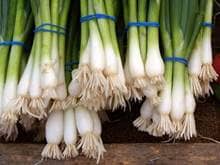 Jews living in Afghanistan developed the tradition of using scallions or leeks to stand for the Egyptian slavedrivers' whips, using them to lightly "whip" each others' backs. Jews have lived in Afghanistan at least since the Babylonian conquest 2,000 years ago, but in 2004 only two Jews were left in the country. It is now estimated that only a single Jew lives in Afghanistan, as the other died in 2005. The largest group of Afghan Jews in the world is comprised of 200 families in Queens, New York.
Jews living in Afghanistan developed the tradition of using scallions or leeks to stand for the Egyptian slavedrivers' whips, using them to lightly "whip" each others' backs. Jews have lived in Afghanistan at least since the Babylonian conquest 2,000 years ago, but in 2004 only two Jews were left in the country. It is now estimated that only a single Jew lives in Afghanistan, as the other died in 2005. The largest group of Afghan Jews in the world is comprised of 200 families in Queens, New York.Destroying Earthenware Dishes
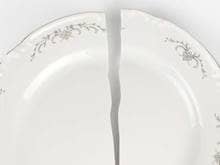 The Jews of Ethiopia strongly identify with the story of Exodus -- and indeed, the first of the famous airlifts that delivered them to Israel was actually called Operation Moses. In some Ethiopian families, the matriarch would destroy all of her earthenware dishes and make a new set to mark a true break with the past. Ethiopian Jews had no Haggadahs, and read about Exodus directly from the Bible. Matzahs were homemade, often from chickpea flour, and on the morning of the seder, a lamb would be slaughtered. They also refrained from eating fermented dairy like yogurt, butter, or cheese.
The Jews of Ethiopia strongly identify with the story of Exodus -- and indeed, the first of the famous airlifts that delivered them to Israel was actually called Operation Moses. In some Ethiopian families, the matriarch would destroy all of her earthenware dishes and make a new set to mark a true break with the past. Ethiopian Jews had no Haggadahs, and read about Exodus directly from the Bible. Matzahs were homemade, often from chickpea flour, and on the morning of the seder, a lamb would be slaughtered. They also refrained from eating fermented dairy like yogurt, butter, or cheese.Tapping Guests on the Head
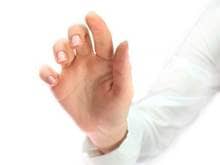 In a custom that began in Spain in the fourteenth century, the seder leader walks around the table three times with the seder plate in hand, tapping it on the head of each guest. Many Moroccan, Turkish, and Tunisian Jews adopted this tradition, which is said to bless those whose heads are tapped. This is sometimes connected to the Talmudic custom of "uprooting" the seder plate so that guests might ask questions about the Jews in Egypt.
In a custom that began in Spain in the fourteenth century, the seder leader walks around the table three times with the seder plate in hand, tapping it on the head of each guest. Many Moroccan, Turkish, and Tunisian Jews adopted this tradition, which is said to bless those whose heads are tapped. This is sometimes connected to the Talmudic custom of "uprooting" the seder plate so that guests might ask questions about the Jews in Egypt.Telling the Exodus Story in Costume
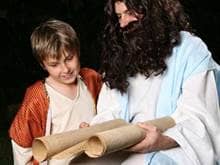 In many Sephardic traditions, (a term used to describe Jews originally hailing from the Iberian peninsula and North Africa), an elder member of the family enacts a skit in costume, posing as an ancient Jew who experienced the exodus from Egypt and describing the miracles he saw. In the countries of the Caucasus region, Iraq, Kurdistan, Yemen, and others, the seder (usually the head of household), would put the afikoman matzah in a bag, throw it over his shoulder, and use a cane to support himself. Sometimes a child participated, and there was a call and response with the table: "Where are you coming from?" "Egypt," was the reply, followed by the story of the Israelites following Moses out of slavery. "And where are you going?" someone at the table would ask. "Jerusalem!"
In many Sephardic traditions, (a term used to describe Jews originally hailing from the Iberian peninsula and North Africa), an elder member of the family enacts a skit in costume, posing as an ancient Jew who experienced the exodus from Egypt and describing the miracles he saw. In the countries of the Caucasus region, Iraq, Kurdistan, Yemen, and others, the seder (usually the head of household), would put the afikoman matzah in a bag, throw it over his shoulder, and use a cane to support himself. Sometimes a child participated, and there was a call and response with the table: "Where are you coming from?" "Egypt," was the reply, followed by the story of the Israelites following Moses out of slavery. "And where are you going?" someone at the table would ask. "Jerusalem!"Breaking Matzah into Hebrew Letters
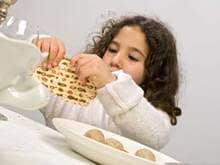 In the Syrian community, the custom of breaking the middle matzah on the seder table into pieces (known as yachatz) can sometimes take on Kabbalistic meaning. Matzah broken into the shape of the Hebrew letters "daled" and "vav" correspond to numbers, which in turn add up to 10, representing the 10 holy emanations of God. Jews from North Africa, including from Algeria, Tunisia, Morocco, and Libya, break the matzoh into the shape of the Hebrew letter "hey," which corresponds to the number five.
In the Syrian community, the custom of breaking the middle matzah on the seder table into pieces (known as yachatz) can sometimes take on Kabbalistic meaning. Matzah broken into the shape of the Hebrew letters "daled" and "vav" correspond to numbers, which in turn add up to 10, representing the 10 holy emanations of God. Jews from North Africa, including from Algeria, Tunisia, Morocco, and Libya, break the matzoh into the shape of the Hebrew letter "hey," which corresponds to the number five.Inspecting Rice for Defects
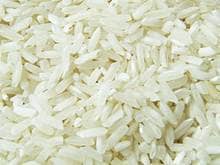 Jews have lived in Cochin, in the Indian state of Kerala, for 2,000 years. In the tiny community that remains, Passover preparation begins immediately after Hanukkah, about 100 days beforehand. After Purim, Cochin's Jews scrub their house of chametz (bread and any fermented grain) and repaint them, keeping special Passover dishes in a separate room. Wells are drained and cleaned for fear of chametz, and every grain of rice is inspected for defects that might let impure chametz in. Jews usually maintain warm relations with the larger community, but during Passover and the preceding months, they keep entirely to themselves.
Jews have lived in Cochin, in the Indian state of Kerala, for 2,000 years. In the tiny community that remains, Passover preparation begins immediately after Hanukkah, about 100 days beforehand. After Purim, Cochin's Jews scrub their house of chametz (bread and any fermented grain) and repaint them, keeping special Passover dishes in a separate room. Wells are drained and cleaned for fear of chametz, and every grain of rice is inspected for defects that might let impure chametz in. Jews usually maintain warm relations with the larger community, but during Passover and the preceding months, they keep entirely to themselves.Cooking with Wine from Elijah's Cup
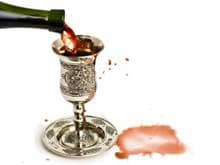 Many different customs surround the welcoming of the prophet Elijah, who is said to visit every seder. While Ashkenazi Jews (whose families came from Germany and later Eastern Europe) commonly leave a goblet of wine for the prophet, in Casablanca, Morocco, Jews would set up an elaborate chair with cushions and ornaments and leave it empty for Elijah's arrival. And in Marrakesh, dishes are prepared using the wine from Elijah's cup. Ashkenazi Jews often open the door to allow Elijah in, a tradition that wasn't historically a part of the Sephardic practice.
Many different customs surround the welcoming of the prophet Elijah, who is said to visit every seder. While Ashkenazi Jews (whose families came from Germany and later Eastern Europe) commonly leave a goblet of wine for the prophet, in Casablanca, Morocco, Jews would set up an elaborate chair with cushions and ornaments and leave it empty for Elijah's arrival. And in Marrakesh, dishes are prepared using the wine from Elijah's cup. Ashkenazi Jews often open the door to allow Elijah in, a tradition that wasn't historically a part of the Sephardic practice.Wearing White
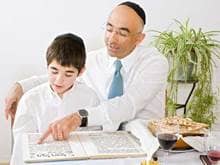 Both Hasidic Jews and Moroccan Jews have the custom of wearing white to seder, possibly to signify joyfulness. Some Jews wear white on Rosh Hashanah, the Jewish new year, or on Yom Kippur, the Day of Atonement, although this varies.
Both Hasidic Jews and Moroccan Jews have the custom of wearing white to seder, possibly to signify joyfulness. Some Jews wear white on Rosh Hashanah, the Jewish new year, or on Yom Kippur, the Day of Atonement, although this varies.Displaying Gold and Silver Jewelry
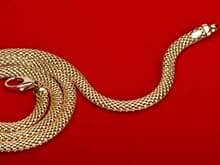 Three passages in Exodus say that the Israelites received gold and silver from the Egyptians (for example, 12:35: "The Israelites did as Moses instructed and asked the Egyptians for articles of silver and gold and for clothing"). Accordingly, Hungarian Jews had a tradition of putting all of their gold and silver jewelry on the seder table.
Three passages in Exodus say that the Israelites received gold and silver from the Egyptians (for example, 12:35: "The Israelites did as Moses instructed and asked the Egyptians for articles of silver and gold and for clothing"). Accordingly, Hungarian Jews had a tradition of putting all of their gold and silver jewelry on the seder table.Tossing Pebbles in the Ocean
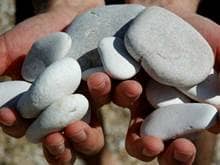 Among Moroccan Jews, Mimouna is celebrated the day after Passover with a generous feast of baked goods. Some say it marks Maimonides' birthday, while others link it to the Arabic word for luck. A table is heaped with items symbolizing luck or fertility, many repeating the number 5, such as dough with five fingerprint marks or five silver coins. Fig leaves, live fish, stalks of wheat, and honey might also be included. In some parts of the Moroccan Jewish community, Jews entered the ocean and tossed pebbles behind their backs to ward off evil spirits.
Among Moroccan Jews, Mimouna is celebrated the day after Passover with a generous feast of baked goods. Some say it marks Maimonides' birthday, while others link it to the Arabic word for luck. A table is heaped with items symbolizing luck or fertility, many repeating the number 5, such as dough with five fingerprint marks or five silver coins. Fig leaves, live fish, stalks of wheat, and honey might also be included. In some parts of the Moroccan Jewish community, Jews entered the ocean and tossed pebbles behind their backs to ward off evil spirits.



Tidak ada komentar:
Posting Komentar